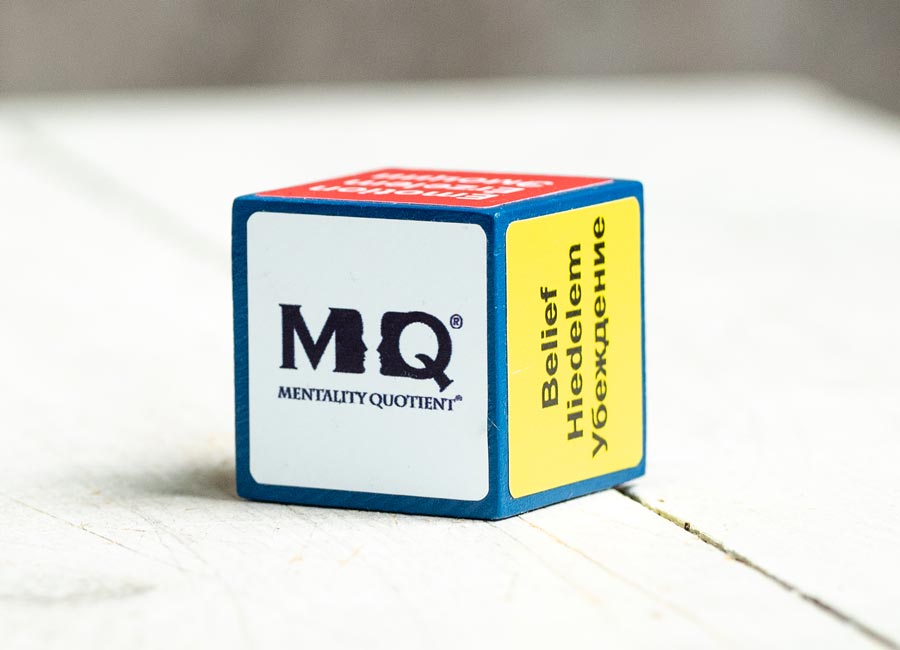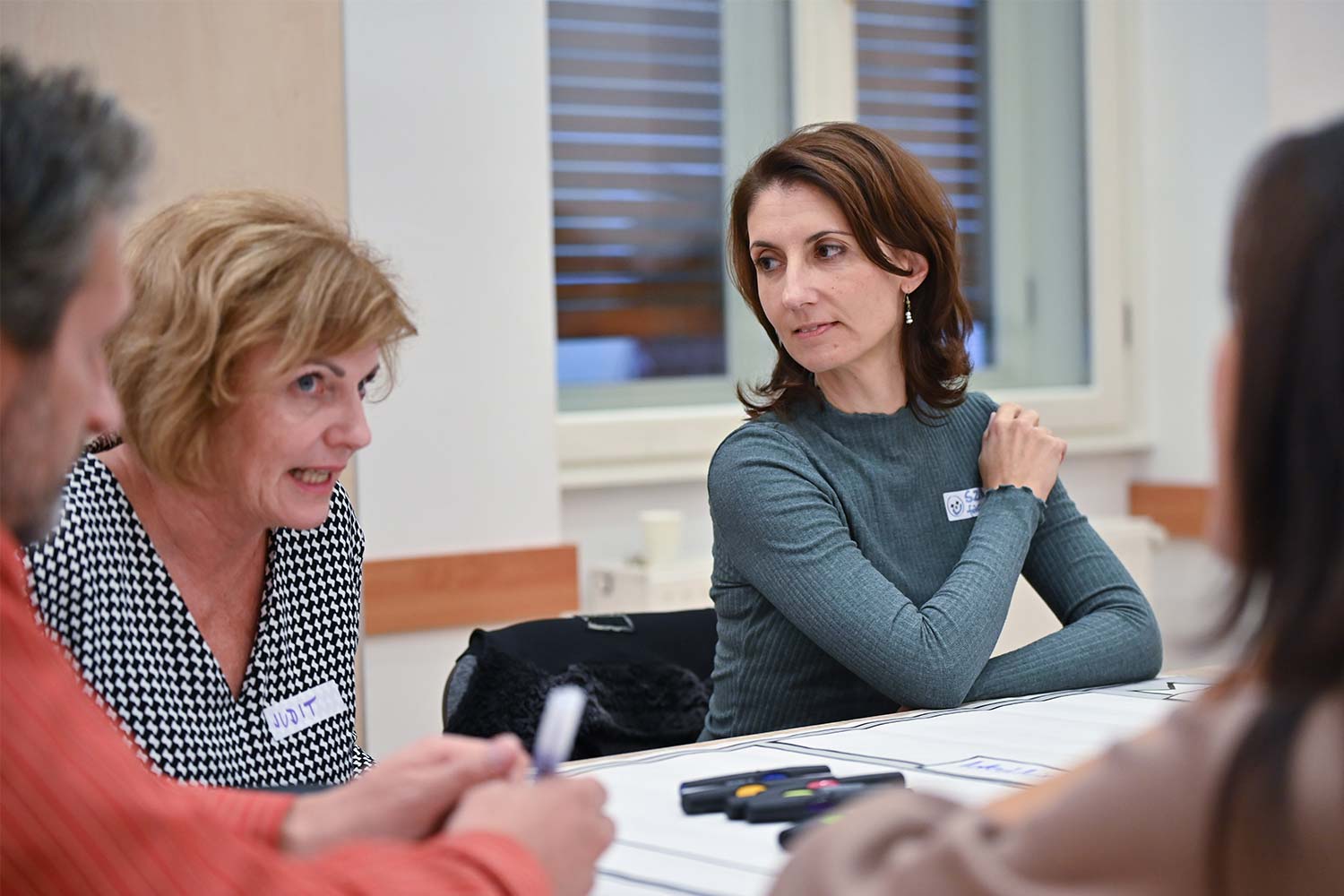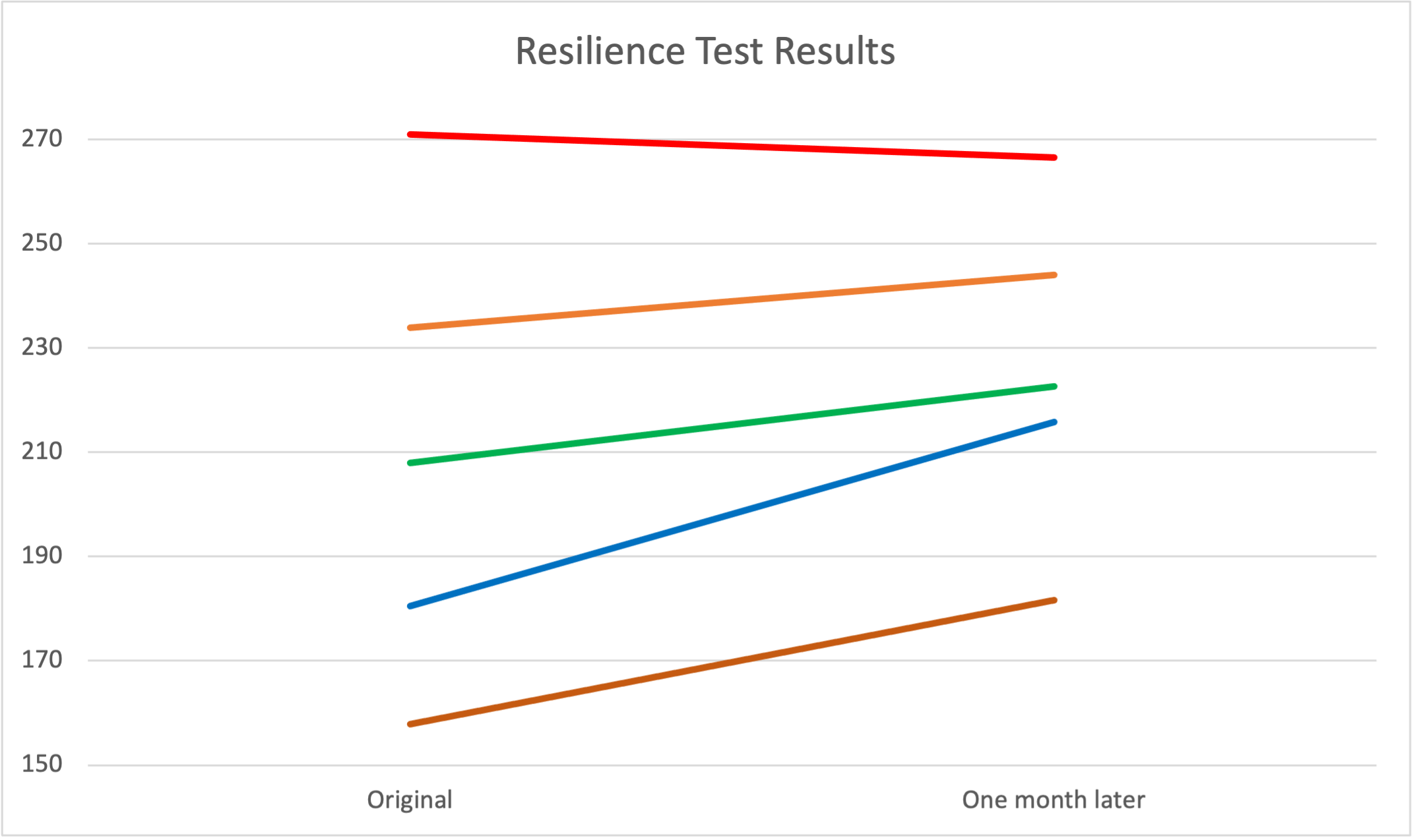SkillToGo Resilient Test
Explore your reactions in positive and negative situations with our validated test.
This is the only European resilience test investigating your reactions in real life situations instead of working with a self-assessment scale. The tool has been in use for 15+ years in 8 European countries and is available in 8 languages.
Resilience Test 101
Change starts with awareness of the facts - just as you step on a scale before you go on a diet to lose weight. Awareness requires measurement. The SkillToGo resilience test tells you how well you manage challenging situations.
The test
-
shows your actual resilience level compared to ideal resilience
-
identifies your present life strategies: your instinctive reactions in different situations
-
points out the development area for your fastest growth in resilience


Why it's unique?
The SkillToGo Resilience Test - unlike most psychological tests - is based on reaction preferences to life situations instead of a self-evaluated scaling of statements. Our assessment tool is the only one using bad and good events in its items to discover your basic life strategy.
With 5000+ tests taken and 2 university studies we proved that there are two significantly different life strategies:
-
Focusing on success, gaining energy from good performance.
-
Focusing on setbacks, gaining energy from overcoming difficulties.
Our study proved that resilience comes from the combination of these two strategies - which we call mixed strategy.
Only about 15% of our test subjects can use the mixed strategy instinctively, without any specific training.

Application of the test
The results of resilience assessment and training at a telecommunication company:
Resilience is needed the most when you experience loss. Our trainer team took part in an important project when one of our biggest customers was forced to lay off several hundreds of employees for economic reasons. The situation and its consequences were openly communicated to people in a very professional way. At the same time the company offered resilience development to employees.
Those who accepted to participate filled out our resilience test two times: first 2 weeks before the 1-day resilience training and then 4 weeks after the training.
Changes in their resilience level are demonstrated on the following graph:


A total of 268 employees took the opportunity to participate in the program. 76 of them agreed to take the resilience test 2 times - both before and after the program.
80% of these 76 people demonstrably increased their resilience level with the help of the program. We discovered interesting findings when analyzing the test results of the initially highest and lowest scoring groups:
The resilience development program enhances risk assessment skills of too optimistic people making them more cautious and better risk managers.
It is promising that those who had the lowest scores on the first test, raised their resilience level the most after the 1-day intervention.
Overall the study shows that a 1-day intensive program results in measurable development in our ability to take effective action in challenging situations.
Assessment and its scientific background

Barbara L. Fredrickson
The Broaden and Build theory revolutionized our knowledge concerning the importance of positive emotions. The SkillTo resilience test indicates the exact level of experienced positive emotions.

Mihály Csíkszentmihályi
Coined the notion of FLOW. The "O" dimension of our test indicates the exact amount of experienced control. Control is a precondition of being in FLOW. He linked positive psychology to good business.

Martin E. P. Seligman
Researcher of Learned Helplessness. Seligman proved that lack of control causes pessimism and passivity. Our resilience test is based on Seligman's discovery and his conclusion on learned optimism.
Check what’s in the report and how to use your result?
Two reports are available after taking the test:
The individual SkillToGo resilience report
The business report of the SkillToGo resilience test
Once you are aware of the present level of your resilience you are in a position to deliberately maintain and/or increase it. Check our SkillToGo 4 Steps resilience program for more details on resilience development.